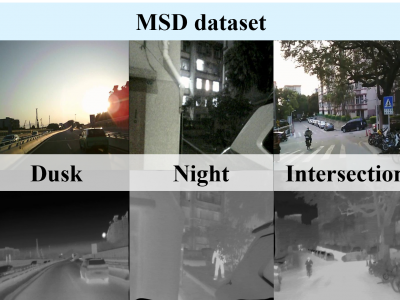Artificial Intelligence
The use of technology in cricket has seen a significant increase in recent years, leading to overlapping computer vision-based research efforts. This study aims to extract front pitch view shots in cricket broadcasts by utilizing deep learning. The front pitch view (FPV) shots include ball delivery by the bowler and the stroke played by the batter. FPV shots are valuable for highlight generation, automatic commentary generation and bowling and batting techniques analysis. We classify each broadcast video frame as FPV and non-FPV using deep-learning models.
- Categories:
 53 Views
53 ViewsThe CIFAR-10 dataset consists of 60000 32x32 colour images in 10 classes, with 6000 images per class. There are 50000 training images and 10000 test images.The dataset is divided into five training batches and one test batch, each with 10000 images. The test batch contains exactly 1000 randomly-selected images from each class. The training batches contain the remaining images in random order, but some training batches may contain more images from one class than another.
- Categories:
 73 Views
73 ViewsThe CIFAR-10 dataset consists of 60000 32x32 colour images in 10 classes, with 6000 images per class. There are 50000 training images and 10000 test images.The dataset is divided into five training batches and one test batch, each with 10000 images. The test batch contains exactly 1000 randomly-selected images from each class. The training batches contain the remaining images in random order, but some training batches may contain more images from one class than another.
- Categories:
 Views
ViewsThe CIFAR-10 dataset consists of 60000 32x32 colour images in 10 classes, with 6000 images per class. There are 50000 training images and 10000 test images.The dataset is divided into five training batches and one test batch, each with 10000 images. The test batch contains exactly 1000 randomly-selected images from each class. The training batches contain the remaining images in random order, but some training batches may contain more images from one class than another.
- Categories:
 28 Views
28 Views
Sensitivity (Se) is the proportion of correctly identified actual abnormal intelligence C&A by the models. Specificity (Sp) is the proportion of correctly identified normal intelligence C&A by the models. Positive predictive value (PV+) is the proportion of correctly identified C&A predicted to have abnormal intelligence. Negative predictive value (PV–) is the proportion of correctly identified C&A predicted to have normal intelligence. Odds ratio (OR) represents the ability of the models to distinguish between C&A with normal and abnormal intelligence.
- Categories:
 17 Views
17 Views
Real-time tracking of electricians in distribution rooms is essential for ensuring operational safety. Traditional GPS-based methods, however, are ineffective in such environments due to complex non-line-of-sight (NLOS) conditions caused by dense cabinets and thick walls that obstruct satellite signals. Existing solutions, such as video-based systems, are prone to inaccuracies due to NLOS effects, while wearable devices often prove inconvenient for workers.
- Categories:
 17 Views
17 ViewsThis dataset contains anonymized responses from 600 Egyptian citizens collected in March 2025 to assess public perceptions of artificial intelligence (AI) and deepfake technologies used in the animation of ancient pharaonic statues and symbols. The survey was conducted as part of a broader research study titled "Animating the Sacred: The Ethical and Cultural Implications of AI-Powered Awakening of Pharaonic Symbols Using Deepfake Techniques."
- Categories:
 173 Views
173 Views
The diameter of the rivet hole is 5mm. In the experiments at the Cooperative Institute, the AE sensor spacing was set to 130mm, where the centers of sensor 1 and sensor 2 were 90mm from each end of the test piece. The waveform flow data obtained in the experiment only retained the information from 30 minutes before the crack initiation to the fracture of the test piece, and the image data of the test piece during this period were recorded.
- Categories:
 12 Views
12 Views
Droidware is an Android malware dataset developed at the Cybersecurity Lab, GLA University, India. It comprises 253,527 applications, including 129,950 benign and 123,577 malicious samples. The dataset captures 68 features extracted from function call graphs, permissions, and Java source code, providing a comprehensive view of Android malware behavior. This latest and up-to-date dataset supports the training of AI-based malware detection models, aiding in the development of robust malware classification and threat mitigation strategies for cybersecurity research.
- Categories:
 40 Views
40 Views



